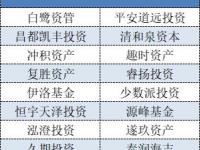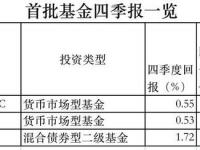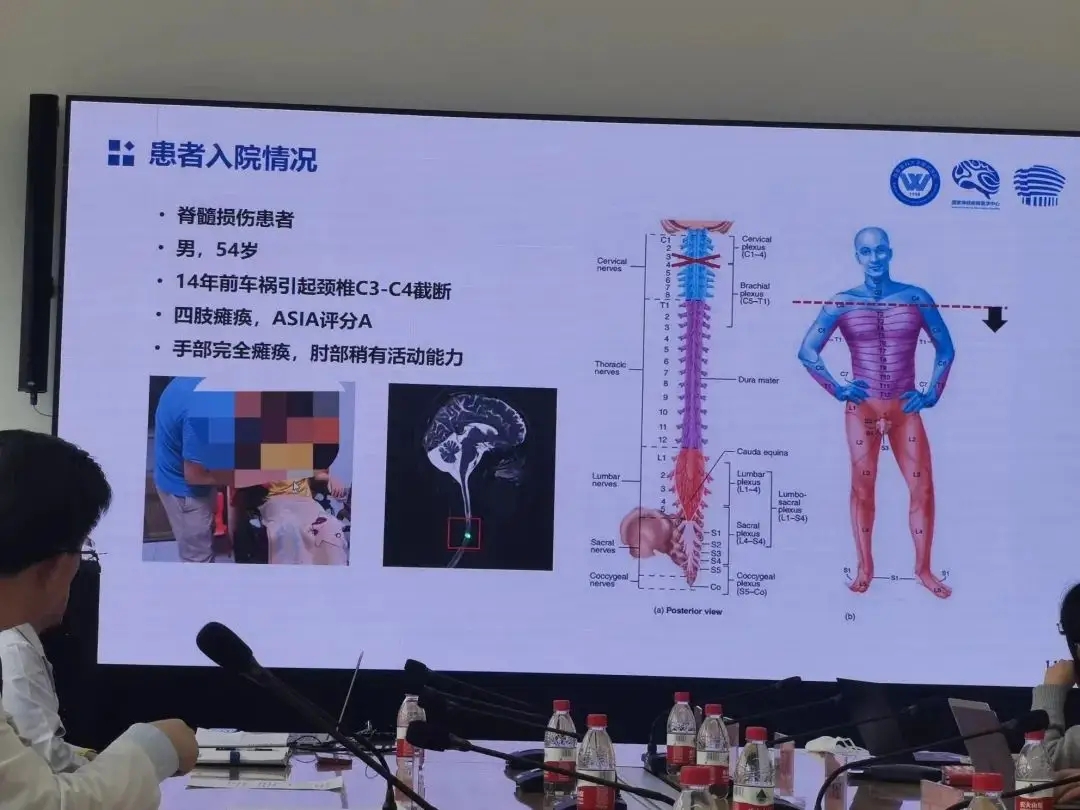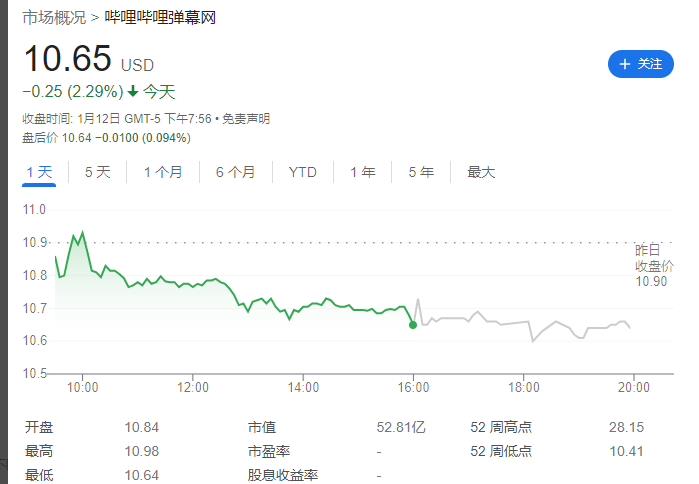SWEN20003代写、Java编程设计代做
SWEN20003 Object Oriented Software Development Project 2, 2024
The University of Melbourne
School of Computing and Information Systems
SWEN20003 Object Oriented Software Development
Project 2, Semester 1, 2024
Released: Friday, 19th April 2024 at 6:00pm AEDT
Project 2A Due: Monday, 29th April 2024 at 6:00pm AEDT
Project 2B Due: Friday, 17th May 2024 at 6:00pm AEDT
Please read the complete specification before starting on the project, because there
are important instructions through to the end!
Overview
In this project, you will create an arcade game called ShadowMario in the Java programming
language, continuing from your work in Project 1. We will provide a full working solution for
Project 1; you may use all or part of it, provided you add a comment explaining where you found
the code at the top of each file that uses the sample code.
This is an individual project. You may discuss it with other students, but all of the implementation must be your own work. By submitting the project you declare that you understand
the University’s policy on academic integrity and are aware of consequences of any infringement,
including the use of artificial intelligence.
You may use any platform and tools you wish to develop the game, but we recommend using IntelliJ
IDEA for Java development as this is what we will support in class.
Extensions & late submissions: If you need an extension for the project, please complete the
Extension form in the Projects module on Canvas. Make sure you explain your situation with
some supporting documentation such as a medical certificate, academic adjustment plan, wedding
invitation, etc. You will receive an email saying if the extension was approved or if we need more
information.
If you submit late (either with or without an extension), please complete the Late form in the
Projects module on Canvas. For both forms, you need to be logged in using your university
account. Please do not email any of the teaching team regarding extensions or late submissions.
All of this is explained again in more detail at the end of this specification.
There are two parts to this project, with different submission dates. The first task, Project
2A, requires that you produce a class design demonstrating how you plan to implement the game.
This should be submitted in the form of a UML diagram showing all the classes you plan to implement, the relationships (e.g. inheritance and associations) between them, and their attributes,
as well as their primary public methods. You do not need to show constructors, getters/setters,
dependency, composition or aggregation relationships. If you so choose, you may show the relationship on a separate page to the class members in the interest of neatness, but you must use correct
UML notation. Please submit as a PDF file only on Canvas.
1
SWEN20003 Object Oriented Software Development Project 2, 2024
The second task, Project 2B, is to complete the implementation of the game as described in the
rest of this specification. You do not need to strictly follow your class design from Project 2A;
you will likely find ways to improve the design as you implement it. Submission will be via GitLab
and you must make at least 5 commits throughout your project.
Game Overview
“The aim is simple - move the player to jump over the enemies and collect the coins. To win
each level, you need to reach the end flag. The second level features flying platforms that the
player can jump on to, extra powers such as invincibility and double score. The third level
includes the enemy boss that the player must defeat by shooting fireballs. Can you reach the end
flags and beat the boss to win the game?”
The game features three levels : Level 1, Level 2 and Level 3. In Level 1, the player has to
press the arrow keys to move left, right or jump. The player can collect coins by colliding with
them - collecting one coin, increases the score by one. The player can avoid enemies by jumping
over them. Unlike in Project 1, the enemies will be moving now in a fixed range (this is explained
in detail later). If the player collides with an enemy, they will lose health points. To complete the
level, the player needs to reach the end flag. If the player’s health points reduce to zero, the game
ends.
Level 2 features the same gameplay as above but the player now has to deal with additional features.
Flying platforms are moving entities that the player can jump on to and move on. The player can
gain two new powers by colliding with the invincibility entity and double score entity. Invincibility
makes the player invincible to health loss from enemy collisions for a set period of time and double
score grants the player, double the score from each coin collected for a set period of time. Once
again, to complete the level, the player needs to reach the end flag.
Level 3 is the final level. It includes all of the above as well as an enemy boss at the end of the
level. When the enemy boss and the player come into a fixed distance from each other, they can
both shoot fireballs at each other that cause health points loss. To complete the level and finish
the game, the player must beat the enemy boss and reach the end flag.
Note that the game does not need to be played progressively. You can choose which level to play
from the start screen and also at the end of each level.
An Important Note
Before you attempt the project or ask any questions about it on the discussion forum, it is crucial
that you read through this entire document thoroughly and carefully. We’ve covered every detail
below as best we can without making the document longer than it needs to be. Thus, if there is
any detail about the game you feel was unclear, try referring back to this project spec first, as it
can be easy to miss some things in a document of this size. And if your question is more to do on
how a feature should be implemented, first ask yourself: ‘How can I implement this in a way that
2
SWEN20003 Object Oriented Software Development Project 2, 2024
both satisfies the description given, and helps make the game easy and fun to play?’ More
often than not, the answer you come up with will be the answer we would give you!
Figure 1: Start Screen Screenshot
(a) Completed Level 2 Screenshot (b) Completed Level 3 Screenshot
Figure 2: Level Screenshots
Note : the actual positions of the entities in the levels we provide you may not be the same as in
these screenshots.
3
SWEN20003 Object Oriented Software Development Project 2, 2024
The Game Engine
The Basic Academic Game Engine Library (Bagel) is a game engine that you will use to develop
your game. You can find the offline documentation for Bagel on Canvas under the Projects module.
Coordinates
Every coordinate on the screen is described by an (x, y) pair. (0, 0) represents the top-left of the
screen, and coordinates increase towards the bottom-right. Each of these coordinates is called a
pixel. The Bagel Point class encapsulates this.
Frames
Bagel will refresh the program’s logic at the same refresh rate as your monitor. Each time, the
screen will be cleared to a blank state and all of the graphics are drawn again. Each of these steps
is called a frame. Every time a frame is to be rendered, the update() method in ShadowMario is
called. It is in this method that you are expected to update the state of the game.
Your code will be marked on 120Hz screens. The refresh rate is typically 120 times per second
(Hz) but some devices might have a lower rate of 60Hz. In this case, when your game is running,
it may look different to the demo videos as the constant values in this specification have been
chosen for a refresh rate of 120Hz. For your convenience, when writing and testing your code, you
may change these values to make your game playable (these changes are explained later). If you
do change the values, remember to change them back to the original specification values before
submitting, as your code will be marked on 120Hz screens.
The Levels
Our game will have three levels, each with elements to implement that are described below.
Window and Background
The background (background.png) should be rendered on the screen to completely fill up your
window throughout the game (for the start screen and all the levels). The default window size
should be 1024 * 768 pixels. The background has already been implemented for you in the skeleton
package.
Start Screen
Each level has the same start screen. The screen has a title message that reads SHADOW MARIO
should be rendered in the font provided in res folder (FSO8BITR.ttf), in size 64. The bottom left
corner of this message should be located at (220, 250).
4
SWEN20003 Object Oriented Software Development Project 2, 2024
Additionally, an instruction message consisting of 4 lines:
USE ARROW KEYS TO MOVE
ENTER LEVEL TO START - 1, 2, 3
should be rendered below the title message, in the font provided, in size 24. The bottom left of
the first line in the message should be coded as follows: the x-coordinate should be calculated such
that the whole message looks centered horizontally, and the y-coordinate should be at 400 pixels.
There must be adequate spacing between the 2 lines to ensure readability (you can decide on
the value of this spacing yourself, as long as it’s not small enough that the text overlaps or too big
that it doesn’t fit within the screen). You can align the lines as you wish.
The player chooses which level to play by pressing the corresponding key (1, 2 or 3). Once the level
is over, regardless of whether it was won or lost, the player will be re-directed back to the start
screen.
Properties File
The key values of the game are listed in two properties files which are given in the skeleton package. The message coordinates, image filenames and other values are given in the app.properties
file. The message strings are given in the message en.properties file. These files shouldn’t be
edited (unless you need to adjust values for any frame rate issues). All properties given in the files
should be read-in and not hard-coded.
To read a value from one of these properties, a Properties object must be created. The
getProperty method can be called on this object with the required value given as the parameter. For your reference, the skeleton package contains an example of how to read the background
image filename, window width and window height values.
World File
The entities will be defined in a world file, describing the type and their position in the window.
The world files for each level are level1.csv, level2.csv and level3.csv correspondingly. A
world file is a comma-separated value (CSV) file with rows in one of the following formats:
Type of entity, x-coordinate, y-coordinate
An example of a world file:
PLATFORM,3000,745
PLAYER,100,687
COIN,300,510
FLYING_PLATFORM,400,555
DOUBLE_SCORE,1700,690
ENEMY,400,695
INVINCIBLE_POWER,1800,505
END_FLAG,4100,670
5
SWEN20003 Object Oriented Software Development Project 2, 2024
The given (x, y) coordinates refer to the centre of each image and these coordinates should be
used to draw each image. You must actually load it—copying and pasting the data, for example, is
not allowed. Marking will be conducted on hidden different CSV files of the same format. Note:
You can assume that there will always be at least one of each for all the entities. The total number
of entites in each CSV may vary however.
End Screen
Each level has the same end screen. The end screen has one message - either a win or loss message.
When the player has reached the end flag of a level, this is considered as a win. This differs only
in Level 3, where the player must both reach the end flag and beat the enemy boss (its health
must reduce to 0). For a win, the message has the 2 following lines:
CONGRATULATIONS, YOU WON!
PRESS SPACE TO CONTINUE
It should be rendered, in the font provided, in size 24. The bottom left of the first line in the
message should be coded as follows: the x-coordinate should should be calculated such that the
whole message looks centered horizontally and the y-coordinate should be at 400 pixels.
If the player’s health points reduces to 0 or below, this is considered as a loss and the game ends.
For a loss, the message has the 2 following lines:
GAME OVER, YOU LOST!
PRESS SPACE TO CONTINUE
It should be rendered, in the font provided, in size 24. The bottom left of the first line in the
message should be coded as follows: the x-coordinate should be calculated such that the whole
message looks centered horizontally and the y-coordinate should be at 400 pixels.
When the player presses the space key, the start screen should be rendered again as described in
the Start Screen section and the player can choose to play again. The player can terminate the
game window at any point (by pressing the Escape key or by clicking the Exit button) - the window
will simply close and no message will be shown.
Hint: The drawString() method in the Font class uses the given coordinates as the bottom left
of the message. So to make the message look centered horizontally, you will need to calculate the
coordinate using the Window.getWidth() and Font.getWidth() methods.
6
SWEN20003 Object Oriented Software Development Project 2, 2024
The Game Entities
The following game entities have an associated image (or multiple!) and a starting location (x,
y). Remember that all images are drawn from the centre of the image using these coordinates.
Player
In our game, the player can move on screen in one of three directions (left, right and up) when the
corresponding arrow key is pressed. However, for our ease of implementation, we assume the player
can only move vertically and remains stationary in the horizontal direction (i.e. the other entities
will be moving in relation to the player’s arrow key pressed - this is explained in detail later ).
(a) player left.png (b) player right.png
Figure 3: The player’s images
The player is represented by the two images shown above. Based on the direction the player is
moving, the corresponding image should be rendered. The player will start the game facing right.
The player’s jumping upwards motion will be considered in 3 stages, where the speed in the vertical
direction will change:
• Player is currently on a platform & up arrow key is pressed => the vertical speed should be
set to -20 (i.e. the y-coordinate will be decreasing by 20 pixels per frame).
• During the player’s jumping motion => vertical speed should increase by 1 each frame.
• Player has finished jump & has reached platform again => vertical speed should be set to 0
and the player should not move below the platform.
Hint: Remember that y increases in the downward direction on screen.
Figure 4: Player’s score
The player has an associated score. When the player collides with a
coin, the player’s score increases by 1 (the points value of the coin). The
score is rendered in the top left corner of the screen in the format of
"SCORE k" where k is the current score. The bottom left corner of this
message should be located at (35, 35) and the font size should be 30.
Figure 5: Player’s health
When a player collides with an enemy (not including the enemy boss),
the player’s health decreases once by 0.05 (the damage points value
of the enemy). The player starts each level with a health value of 1.
The health value is rendered in the top right corner of the screen in the
format of "HEALTH k" where k is the current health, shown as integer
7
SWEN20003 Object Oriented Software Development Project 2, 2024
percentage of the total health. The bottom left corner of this message should be located at (750,
35) and the font size should be 30.
If the player’s health value becomes less than or equal to zero, the player moves vertically down off
the screen and the game ends. This is done by setting the vertical speed to 2 pixels per frame.
In Level 3, the player can inflict damage on the enemy boss by shooting fireballs by pressing the
S key. This can only happen when the player is less than 500 pixels from the boss. This will be
described in detail later. The rest of the player’s behaviour in Level 2 and 3, is the same as in Level 1.
Enemy
Figure 6: enemy.png
An enemy is an entity shown by enemy.png, that can move in the horizontal direction and appears in all 3 levels. It has a damage points value
of 0.05. The enemy has two movements - randomly in a set range and
also in relation to the player’s key press.
When the player’s arrow keys are pressed, the enemy will move similar to Project 1. When the
player’s right arrow key is pressed or held down, the enemy will move to the left by 5 pixels per
frame. When the player’s left arrow key is pressed or held down, the enemy will move to the right
by the same speed.
The enemy’s random movement is as follows. At creation, each enemy will choose to move either
left or right randomly. Every frame, the enemy will move in this chosen direction by 1 pixel per
frame. It will continue this movement until it has reached a maximum displacement of 50 pixels
from its initial starting position. The enemy will then reverse the direction and the same movement
will occur in the reversed direction. (In other words, the enemy can move by 1 pixel per frame
in a range of 50 pixels either side of its starting position). Note that this random movement will
happen concurrently to the movement with relation to the player key presses, described above.
When the enemy collides with a player, it inflicts damage to the player’s health as described earlier.
Once an enemy has inflicted damage once, it cannot inflict damage again even if there are further
collisions.
Collision Detection
To detect collisions, a range is first calculated by adding the radius of the enemy image and
the radius of the player image. Both values are given in the app.properties file. The current
distance between the player and the enemy is determined by calculating the Euclidean distance
between the two (x, y) coordinates. If the current distance is less than or equal to the range,
this is considered as a collision.
8
SWEN20003 Object Oriented Software Development Project 2, 2024
Enemy Boss
Figure 7: enemy boss.png
The enemy boss is an entity shown by enemy boss.png, that appears in
Level 3. The enemy boss moves only in relation to the player’s arrow key
presses as described next. When the player’s arrow keys are pressed, the
enemy will move similar to Project 1. When the player’s right arrow key
is pressed or held down, the enemy will move to the left by 5 pixels per
frame. When the player’s left arrow key is pressed or held down, the enemy will move to the right
by the same speed. Unlike the normal enemy, the boss has no random movement.
The boss has an associated health score that has a value of 1 at the start. The health value is
rendered in the top right corner of the screen in the format of "HEALTH k" where k is the current
health, shown as integer percentage of the total health. The bottom left corner of this message
should be located at (750, 65) and the font size should be 30. This message should be displayed
in the colour red. Hint: The DrawOptions class in Bagel will help you do this.
Every 100 frames, the enemy boss will randomly inflict damage on the player by shooting a fireball
if the player is at least 500 pixels from it. The randomness is decided as follows - every 100 frames,
a random boolean is generated - if it is true, the enemy can fire and if false, it cannot fire. Similar
to the player, if the enemy’s health value becomes less than or equal to zero, the enemy dies and
moves vertically down off the screen by 2 pixels per frame.
Fireball
Figure 8: fireball.png
The fireball is an entity that is shown by fireball.png, and appears in
Level 2 and 3. It has a damage points value of 0.5. Both the player and
the enemy boss can shoot a fireball, as described in the previous sections.
Once shot, the fireball will start from the firing entity’s current position
and move horizontally in the direction of its target at a speed of 8 pixels per frame. Collision
detection (as described earlier) is used to determine if it hits a target or not. If the target is hit,
the fireball will disappear from the screen. If the target is missed, the fireball will continue moving
until it reaches the boundary of the window.
Platform
Figure 9: platform.png (cropped to show on one page)
The platform is an entity shown by platform.png, that can move in the horizontal direction
and appears in all 3 levels. When the player’s arrow keys are pressed, the platform will move as
described below.
When the player’s right arrow key is pressed or held down, the platform will move to the left by
5 pixels per frame. When the player’s left arrow key is pressed or held down, the platform will
move to the right by the same speed, only if the platform’s current x-coordinate is less than 3000.
9
SWEN20003 Object Oriented Software Development Project 2, 2024
Flying Platform
Figure 10: flying platform.png
The flying platform is a special type of platform that appears in Level 2 and 3 and is shown by
flying platform.png. It has two movements - randomly in a set range and also in relation to the
player’s key press.
When the player’s right arrow key is pressed or held down, the platform will move to the left by
5 pixels per frame. When the player’s left arrow key is pressed or held down, the platform will
move to the right by the same speed. The random movement is the same as described in the Enemy
section. It has a maximum displacement of 100 pixels.
When the player jumps up, it can land onto a flying platform. To determine this, the following
three conditions need to be true. If these are true, the player’s vertical speed is set to zero (placing
them on the platform).
• The distance between the player’s x-coordinate and the platform’s x-coordinate is less than
200 (this value is called the half length and is given in the app.properties file).
• The distance between the player’s y-coordinate and the platform’s y-coordinate is less than
or equal to 50 (this is called the half height).
• The distance between the player’s y-coordinate and the platform’s y-coordinate is greater
than or equal to the (half height - 1).
(These three conditions are a simplified way of checking if the player is in the region right above
the platform).
Note that from a higher flying platform, the player cannot jump down to a lower flying platform
- the player will simply fall down to the normal platform.
Coin
Figure 11: coin.png
A coin is an entity shown by coin.png, that can move in both horizontal
and vertical directions. It has a points value of 1. When the player’s arrow
keys are pressed, the coin will move as described below.
When the player’s right arrow key is pressed or held down, the coin will
move to the left by 5 pixels per frame. When the player’s left arrow key is pressed or held down,
the coin will move to the right by the same speed.
When a coin collides with a player, the player’s score increases by 1. If the player’s double score
power is active, the score increases by double the points value. The collision detection is determined
in the same way as described above in the Enemy section. Once a collision has happened, a coin
will move upwards and disappear off screen. This is done by setting the vertical speed to -10
pixels per frame.
10
SWEN20003 Object Oriented Software Development Project 2, 2024
Double Score Power
Figure 12: double score.png
The double score power is an entity shown by double score.png and can
move in the horizontal direction. When the player’s right arrow key is
pressed or held down, it will move to the left by 5 pixels per frame.
When the player’s left arrow key is pressed or held down, it will move to
the right by the same speed.
If the player collides with it, the power becomes active for 500 frames. During this time, if the
player collects a coin, the player receives double the points value. The collision detection is determined in the same way as described above in the Enemy section. Once a collision has happened,
the power will move upwards and disappear off screen. This is done by setting the vertical speed
to -10 pixels per frame.
Invincible Power
Figure 13: invincible power.png
The invincible power is an entity shown by invincible power.png and
can move in the horizontal direction. When the player’s right arrow key
is pressed or held down, it will move to the left by 5 pixels per frame.
When the player’s left arrow key is pressed or held down, it will move to
the right by the same speed.
If the player collides with it, the power becomes active for 500 frames. During this time, if the
player collides with a normal enemy or gets hit by a fireball, the player doesn’t receive any damage.
(If the player collides with the same enemy outside of the invincibility period, the enemy can inflict
damage). The collision detection is determined in the same way as described above in the Enemy
section. Once a collision has happened, the power will move upwards and disappear off screen.
This is done by setting the vertical speed to -10 pixels per frame.
End Flag
Figure 14: endflag.png
The end flag is an entity shown by endflag.png, that can move in the
horizontal direction. When the player’s arrow keys are pressed, the flag
will move as described below. When the player’s right arrow key is pressed
or held down, the flag will move to the left by 5 pixels per frame. When
the player’s left arrow key is pressed or held down, the flag will move to
the right by the same speed. The collision detection is checked in the same way as described in the
Enemy section.
11
SWEN20003 Object Oriented Software Development Project 2, 2024
Your Code
You must submit a class called ShadowMario that contains a main method that runs the game as
prescribed above. You may choose to create as many additional classes as you see fit, keeping in
mind the principles of object oriented design discussed so far in the subject. You will be assessed
based on your code running correctly, as well as the effective use of Java concepts. As always in
software engineering, appropriate comments and variables/method/class names are important.
Implementation Checklist
To get you started, here is a checklist of the game features, with a suggested order for implementing
them (in addition to the features in Project 1):
• Implement the new level start screen.
• Implement the Level end screen.
• Read the Level 2 CSV file.
• Implement the enemy’s random movement.
• Implement the flying platforms.
• Implement the behaviour of the two powers.
• Read the Level 3 CSV file.
• Implement the enemy boss behaviour/logic.
• Implement the fireball’s behaviour.
Supplied Package and Getting Started
You will be given a package called project-2-skeleton.zip that contains the following: (1)
Skeleton code for the ShadowMario and IOUtils classes to help you get started, stored in the src
folder. (2) All graphics and fonts that you need to build the game, stored in the res folder. (3).
The pom.xml file required for Maven. You should use this template exactly how you did for Project
1, that is:
1. Unzip it.
2. Move the content of the unzipped folder to the local copy of your [username]-project-2]
repository.
3. Push to Gitlab.
4. Check that your push to Gitlab was successful and to the correct place.
5. Launch the template from IntelliJ and begin coding.
6. Commit and push your code regularly.
12
SWEN20003 Object Oriented Software Development Project 2, 2024
Customisation (optional)
We want to encourage creativity with this project. We have tried to outline every aspect of the
game design here, but if you wish, you may customise any part of the game, including the graphics,
types of actors, behaviour of actors, etc (for example, an easy extension could be to introduce
a new level with different entites or powers). You can also add entirely new features. For your
customisation, you may use additional libraries (other than Bagel and the Java standard library).
However, to be eligible for full marks, you must implement all of the features in the above implementation checklist. Please submit the version without your customisation to [username]-project-2
repository, and save your customised version locally or push it to a new branch on your Project 2
repository.
For those of you with far too much time on your hands, we will hold a competition for the best game
extension or modification, judged by the lecturers and tutors. The winning three will have their
games shown at the final lecture, and there will be a prize for our favourite. Past modifications
have included drastically increasing the scope of the game, adding jokes and adding polish to the
game, and even introducing networked gameplay.
If you would like to enter the competition, please email the head tutor, Tharun Dharmawickrema
at dharmawickre@unimelb.edu.au with your username, a short description of the modifications
you came up with and your game (either a link to the other branch of your repository or a .zip file).
You can email Tharun with your completed customised game anytime before Week 12. Note that
customisation does not add bonus marks to your project, this is completely for fun. We can’t wait
to see what you come up with!
Submission and Marking
Project 2A
Please submit a .pdf file of your UML diagram for Project 2A via the Project 2A tab in the
Assignments section on Canvas.
Project 2B - Technical requirements
• The program must be written in the Java programming language.
• Comments and class names must be in English only.
• The program must not depend upon any libraries other than the Java standard library and
the Bagel library (as well as Bagel’s dependencies).
• The program must compile fully without errors.
• For full marks, every public attribute, method and class must have a short, descriptive
Javadoc comment (which will be covered later in the semester).
Submission will take place through GitLab. You are to submit to your <username>-project-2
repository. At the bare minimum you are expected to follow the structure below. You can create
more files/directories in your repository if you want.
13
SWEN20003 Object Oriented Software Development Project 2, 2024
username -project-2
res
resources used for project 2
src
ShadowMario.java
other Java files
On 17th May 2024 at 6:00pm, your latest commit will automatically be harvested from GitLab.
Commits
You are free to push to your repository post-deadline, but only the latest commit on or before 17th
May 2024 6:00pm will be marked. You must make at least 5 commits throughout the development of the project, and they must have meaningful messages (commit messages must match the
code in the commit). If commits are anomalous (e.g. commit message does not match the code,
commits with a large amount of code within two commits which are not far apart in time) you risk
penalization.
Examples of good, meaningful commit messages:
• implemented movement logic
• fix the fireball’s collision behaviour
• refactored code for cleaner design
Examples of bad, unhelpful commit messages:
• fesjakhbdjl
• yeah easy finished the flying platform
• fixed thingzZZZ
Good Coding Style
Good coding style is a contentious issue; however, we will be marking your code based on the
following criteria:
• You should not go back and comment your code after the fact. You should be commenting
as you go.
• You should be taking care to ensure proper use of visibility modifiers. Unless you have a
very good reason for it, all instance variables should be private. (Constants are allowed to be
public or protected).
• Any constant should be defined as a final variable. Don’t use magic numbers!
• Think about whether your code is written to be easily extensible via appropriate use of classes.
14
SWEN20003 Object Oriented Software Development Project 2, 2024
• Make sure each class makes sense as a cohesive whole. A class should have a single well-defined
purpose, and should contain all the data it needs to fulfil this purpose.
Extensions and late submissions
If you need an extension for the project, please complete Extension form in the Projects module
on Canvas. Make sure you explain your situation with some supporting documentation such as a
medical certificate, academic adjustment plan, wedding invitation, etc. You will receive an email
saying if the extension was approved or if we need more information.
The project is due at 6:00pm sharp on Monday 29th April 2024 (Project 2A) and on Friday 17th
May 2024 (Project 2B). Any submissions received past this time (from 6:00pm onwards) will be
considered late unless an extension has been granted. There will be no exceptions. There is a
penalty of 1 mark for a late project, plus an additional 1 mark per 24 hours. If you submit late
(either with or without an extension), please complete the Late form in the Projects module on
Canvas. For both forms, you need to be logged in using your university account. Please do not
email any of the teaching team regarding extensions or late submissions (as you will be redirected
to the online forms).
Marks
Project 2 is worth 20 marks out of the total 100 for the subject. You are not required to use any
particular features of Java. For example, you may decide not to use any interfaces or generic classes.
You will be marked based on the effective and appropriate use of the various object-oriented
principles and tools you have learnt throughout the subject.
• Project 2A is worth 8 marks.
– Correct UML notation for methods: 2 marks
– Correct UML notation for attributes: 2 marks
– Correct UML notation for associations: 2 marks
– Good breakdown into classes: 1 mark
– Appropriate use of inheritance, interfaces and abstract classes/methods: 1 mark
• Project 2B (feature implementation) is worth 8 marks.
– Correct implementation of start screen and level selection: 0.5 marks
– Correct implementation of player behaviour: 0.5 marks
– Correct implementation of platform and flying platform’s behaviour: 1 mark
– Correct implementation of enemy behaviour (including image, movement and effects):
1 mark
– Correct implementation of enemy boss behaviour (including image, movement and effects): 1 mark
15
SWEN20003 Object Oriented Software Development Project 2, 2024
– Correct implementation of fireball behaviour (including image, movement and effects):
1 mark
– Correct implementation of each power’s behaviour (including image, movement and
effects): 2 marks
– Correct implementation of end flag behaviour: 0.5 marks
– Correct implementation of end screen: 0.5 marks
• Coding Style is worth 4 marks.
– Delegation: breaking the code down into appropriate classes: 0.5 marks
– Use of methods: avoiding repeated code and overly complex methods: 0.5 marks
– Cohesion: classes are complete units that contain all their data: 0.5 marks
– Coupling: interactions between classes are not overly complex: 0.5 marks
– General code style: visibility modifiers, magic numbers, commenting etc.: 1 mark
– Use of Javadoc documentation: 1 mark
16
请加QQ:99515681 邮箱:99515681@qq.com WX:codinghelp










